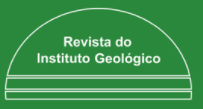Editorial
On repatriation of Brazilian fossil specimens
DOI:
https://doi.org/10.14295/derb.v44.805Resumen
The topic of repatriation has gained significant attention in recent years, particularly in relation to cultural artifacts and historical items. However, it is crucial to extend this conversation to include fossil specimens, which are important components of a nation’s natural and cultural heritages. Brazil – a country renowned for its rich biodiversity and geological significance – has an interest in ensuring the repatriation of its fossil specimens.
Fossils hold immense scientific, cultural, and educational value. They provide invaluable insights into the Earth’s history, evolution of life forms, and climatic changes over millions of years. The fossil record of Brazil is particularly remarkable, containing specimens that are essential for understanding the evolutionary history of life in South America and in the broader global context.
Despite their significance, many Brazilian fossils are housed in international institutions, private collections, and museums worldwide. The removal of these specimens from their country of origin often occurred during the colonial period or subsequently through acquisitions by foreigners. Despite some of these actions were undertaken with the intention of scientific study and preservation, it is crucial to acknowledge that repatriation is a matter of justice and sovereignty.
Repatriating fossil specimens to their country of origin serves to multiple purposes. Firstly, it allows the countries to reclaim their natural heritage, reinforcing national identities and pride. It enables the scientific community within the country to have unrestricted access to these specimens, facilitating research and contributing to the advancement of knowledge in Paleontology and related fields. Furthermore, repatriation fosters the development of local expertise and encourages collaboration between researchers, strengthening scientific partnerships.
Repatriation also promotes cultural exchange and educational opportunities. By showcasing these fossils in Brazilian museums and educational institutions, they become accessible to the public, providing a powerful tool for educating future generations about their natural heritage and the importance of conservation. The repatriated specimens can also serve as catalysts for tourism, attracting visitors from around the world to experience Brazil's unique geological and paleontological wonders firsthand.
It is important to acknowledge the complexities involved in repatriation efforts. Collaboration and cooperation between governments, institutions, and researchers are crucial to establish effective processes for identifying, cataloging, and returning fossils. Transparency and respect for ethical guidelines should be central to these efforts, ensuring that repatriation is conducted responsibly and that the diligence is exercised to prevent the loss or damage of the specimens.
In conclusion, the repatriation of fossil specimens to Brazil is a tool that aligns with principles of justice, national heritage, scientific advancement, and education. By reclaiming its natural treasures, Brazil can enrich its scientific and cultural scenario, while fostering international collaboration and understanding. It is incumbent upon the global community to support these efforts and recognize the significance of repatriation in preserving and celebrating the diverse natural heritage of nations worldwide.
Descargas
Descargas
Publicado
Cómo citar
Número
Sección
Licencia
Derechos de autor 2023 Hermínio Ismael de Araújo-Júnior

Esta obra está bajo una licencia internacional Creative Commons Atribución 4.0.
Política de Acesso Livre:
A revista Derbyana oferece acesso livre ao seu conteúdo. Toda a coleção da Revista é disponibilizada de forma gratuita em https://revistaig.emnuvens.com.br/derbyana e no Portal de Periódicos Eletrônicos em Geociências – PPeGeo (http://ppegeo.igc.usp.br), resultado de parceria entre a Sociedade Brasileira de Geologia e o Serviço de Biblioteca e Documentação do Instituto de Geociências da Universidade de São Paulo.




















